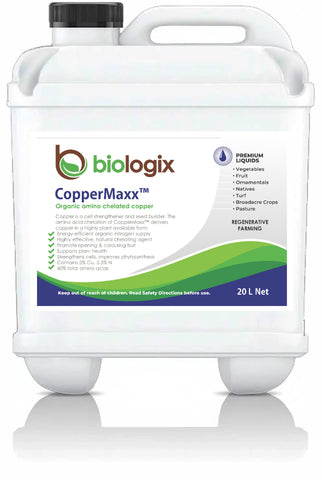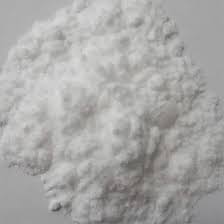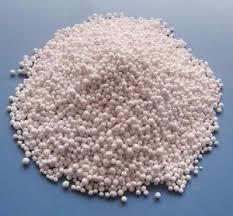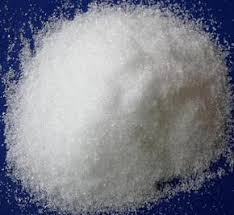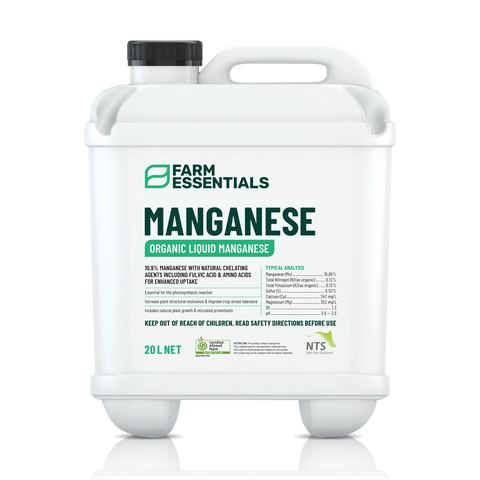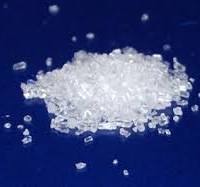
ProductDrop
Cobalt sulphate (CoSO₄) is a source of cobalt (Co), a trace mineral that, while not directly essential for plant growth, plays an indirect but critical role in crops and pastures, particularly in supporting livestock health and nitrogen fixation. In New Zealand (NZ), cobalt is especially important due to its impact on pasture-based farming systems. Below is a concise overview for a grower, including deficiency symptoms and NZ-specific references.
Benefits of Cobalt Sulphate to Crops and Pastures
-
Supports Nitrogen Fixation in Legumes:
-
Cobalt is a component of vitamin B12, which is essential for rhizobia bacteria in legume root nodules to fix nitrogen from the atmosphere.
-
In pastures with legumes like clover, adequate cobalt ensures efficient nitrogen fixation, providing a natural nitrogen source for grasses.
-
Result: Increased pasture productivity and reduced reliance on synthetic nitrogen fertilizers.
-
-
Improves Pasture Quality for Livestock:
-
Cobalt in pasture plants is vital for grazing animals (e.g., sheep and cattle) as it enables the synthesis of vitamin B12 in their rumen, which is necessary for energy metabolism and growth.
-
Applying cobalt sulphate ensures pastures contain sufficient cobalt, preventing deficiency in livestock.
-
Result: Healthier livestock, better weight gain, and higher milk production in dairy systems.
-
-
Enhances Legume Growth:
-
While cobalt doesn’t directly affect plant growth, its role in nitrogen fixation supports the vigor of legumes like clover, lucerne, and beans, which are key components of NZ pastures and crop rotations.
-
Healthy legumes contribute to overall pasture productivity by improving soil fertility.
-
Result: Denser, more nutritious pastures with improved regrowth after grazing.
-
-
Corrects Deficiency in NZ Soils:
-
Cobalt deficiency is common in NZ’s pumice, sandy, or highly weathered soils, such as those in the North Island (e.g., Waikato, Bay of Plenty) and parts of the South Island.
-
Applying cobalt sulphate addresses this, ensuring legumes can support nitrogen fixation and pastures meet livestock needs.
-
Result: Sustained productivity in pasture-based systems, a cornerstone of NZ agriculture.
-
-
Supports Sustainable Farming Practices:
-
By enhancing natural nitrogen fixation, cobalt reduces the need for synthetic fertilizers, lowering costs and environmental impact.
-
Result: More sustainable farming, aligning with NZ’s focus on environmentally friendly agricultural practices.
-
Deficiency Symptoms of Cobalt in Crops and Pastures
Cobalt deficiency primarily affects livestock through pastures, but its impact on legumes can also be observed:
-
Legume Performance: While plants don’t directly show cobalt deficiency symptoms, low cobalt levels impair nitrogen fixation in legumes, leading to pale, less vigorous clover or lucerne, and reduced nitrogen supply to grasses.
-
Pasture Quality: Pastures become less productive, with lower dry matter yields and reduced legume content, impacting overall forage quality.
-
Livestock Symptoms (Indirect):
-
Sheep and cattle grazing on cobalt-deficient pastures show signs of “cobalt deficiency disease” or “pine,” including poor appetite, weight loss, anemia, and reduced wool or milk production.
-
In severe cases, animals exhibit a “wasting” condition, with lambs particularly affected, showing stunted growth and weakness.
-
-
NZ-Specific Observations: Research from AgResearch in NZ has documented cobalt deficiency in sheep and cattle on pumice soils in the central North Island, where pasture cobalt levels fall below 0.08 ppm (the minimum needed for livestock health).
Practical Impact on Yield with NZ References
-
Pastures: In NZ, applying cobalt sulphate to deficient pastures can increase legume nitrogen fixation by 10–20%, boosting overall pasture production by 5–10%, as noted in trials in the Waikato region by AgResearch.
-
Livestock Productivity: Correcting cobalt deficiency in pastures can improve lamb growth rates by 15–25% and increase milk production in dairy cows by 5–10%, according to studies by Massey University in areas like the Bay of Plenty.
-
NZ Context: Cobalt deficiency is a well-known issue in NZ, particularly in the North Island’s pumice soils and South Island’s highly weathered soils, as highlighted by the NZ Ministry for Primary Industries (MPI). MPI recommends maintaining pasture cobalt levels above 0.08 ppm to prevent livestock deficiency.
Application Tips
-
Soil and Tissue Testing: Test pasture cobalt levels, especially in sandy or pumice soils, to confirm deficiency.
-
Application Methods: Apply cobalt sulphate to soil (50 g/ ha of cobalt) or as a foliar spray (0.1–0.2% solution). It’s often mixed with other fertilizers for ease of application.
-
Timing: Apply in spring or early summer to coincide with peak pasture growth and grazing demand.
-
Livestock Supplementation: In severe cases, cobalt can also be supplied directly to livestock via drenches or bullets, but soil application ensures long-term pasture sufficiency.
-
Caution: Avoid over-application, as excess cobalt can be toxic to plants and animals, though this is rare in typical applications.
By using cobalt sulphate to address cobalt needs, you can enhance nitrogen fixation, pasture quality, and livestock productivity, which are critical for NZ’s pasture-based farming systems. If you’re working with a specific region or pasture type in NZ, I can provide more targeted advice!
We Also Recommend

